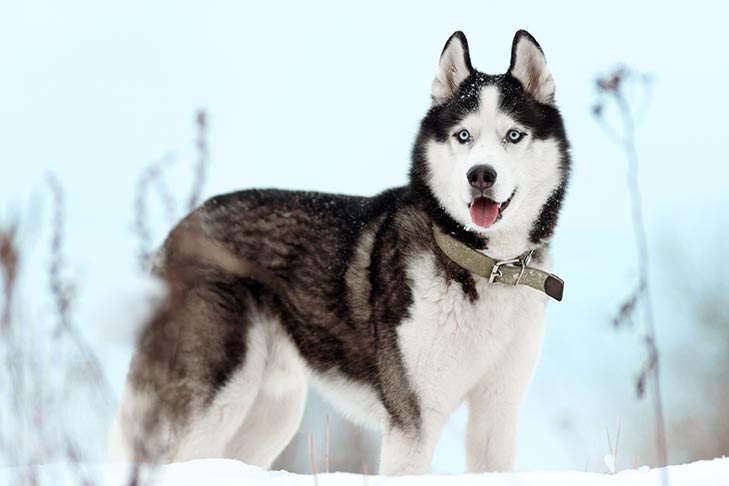- Paws for Thought
- Posts
- Siberian Husky
Siberian Husky
The Talk of the Town

Siberian Husky
Huskies are renowned for their striking appearance, incredible endurance, and captivating personality. These magnificent dogs have captivated the hearts of many dog lovers around the world.
Huskies are instantly recognizable with their striking appearance. These medium-sized dogs have a well-balanced and muscular build. They typically stand at around 20 to 23.5 inches (51 to 60 cm) at the shoulder, with males being slightly larger than females. Their dense double coat comes in a variety of colors, including black, white, gray, red, and sable. Huskies have captivating almond-shaped eyes, often in shades of blue, brown, or a combination of both.
Snow-torious Trouble Makers

Ice Cold Team Players
When it comes to training and caring for Huskies, their unique characteristics and independent nature require specific approaches. Starting early is crucial to establish a solid training foundation. Huskies respond well to positive reinforcement techniques, such as rewards, treats, and praise. Consistency and patience are key, as these dogs can be stubborn at times.
Mental and physical stimulation are vital for Huskies. These active dogs need both activities that challenge them mentally, such as puzzle toys or obedience training, and regular physical exercise. Daily walks, runs, or engaging in dog sports will help fulfill their energetic needs and prevent boredom.
Leash training is of utmost importance for Huskies. Due to their strong prey drive and inclination to explore, teaching them proper leash manners is essential for their safety and the enjoyment of walks. It is crucial to reinforce good leash behavior consistently.
Socialization is another critical aspect of Husky care. Early exposure to various people, animals, and environments will promote good social skills and prevent potential behavioral issues. By introducing them to different situations from a young age, you can raise a well-rounded and sociable Husky.
Talk of the Town
Huskies are known for their wide range of vocalizations, and it should be considered whether such a vocal dog is right for you before adding one to your family. They are known for being great additions to the family, but won’t necessarily be welcomed to the neighborhood with open arms.
In terms of care, Huskies have specific needs. Their thick double coat requires regular brushing to prevent matting and maintain its health. During shedding seasons, known as "blowing their coat," more frequent grooming is necessary to manage the excess fur. Additionally, Huskies should receive proper exercise to keep them mentally and physically stimulated
Temperature considerations are essential for Huskies. While their coats provide insulation against cold weather, they can easily overheat in hot climates. It's crucial to provide shade, fresh water, and avoid excessive exercise during hot weather to prevent heat-related issues.
Regular veterinary check-ups, vaccinations, and preventive care are necessary to ensure the overall health of Huskies. Like any breed, they are prone to certain health conditions, including hip dysplasia, eye issues, and genetic disorders. Staying proactive with their healthcare needs will contribute to their well-being and longevity.
The roots of Huskies trace back to the harsh Arctic regions, where they played a vital role as working dogs. These dogs were originally bred by the Chukchi people of northeastern Asia to pull sleds and assist with transportation in the icy terrains. The Chukchi people relied on Huskies to navigate through snow-covered landscapes, hunt for food, and provide warmth during harsh winters.

The many colors of a Husky
The breed gained international recognition in the early 20th century when they were brought to Alaska for sled dog racing and expeditions. One of the most famous Huskies, Balto, led the final leg of the 1925 serum run to deliver diphtheria antitoxin to the remote town of Nome, Alaska, saving countless lives. This event solidified the Husky's reputation as resilient and heroic dogs.
Over time, Huskies have evolved, and their working roles have transitioned to more recreational and companionship purposes. Today, they are still used in sled dog racing and enjoy participating in other dog sports like agility, obedience, and skijoring.
There will be plenty more where this comes from, with more breeds to have overviews on and plenty of dog toys, treats, and chews to recommend.
Unleashing a world of woofs and wags
